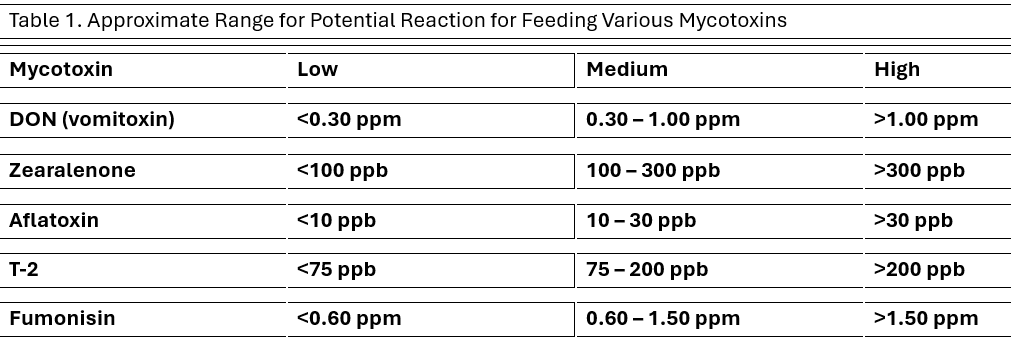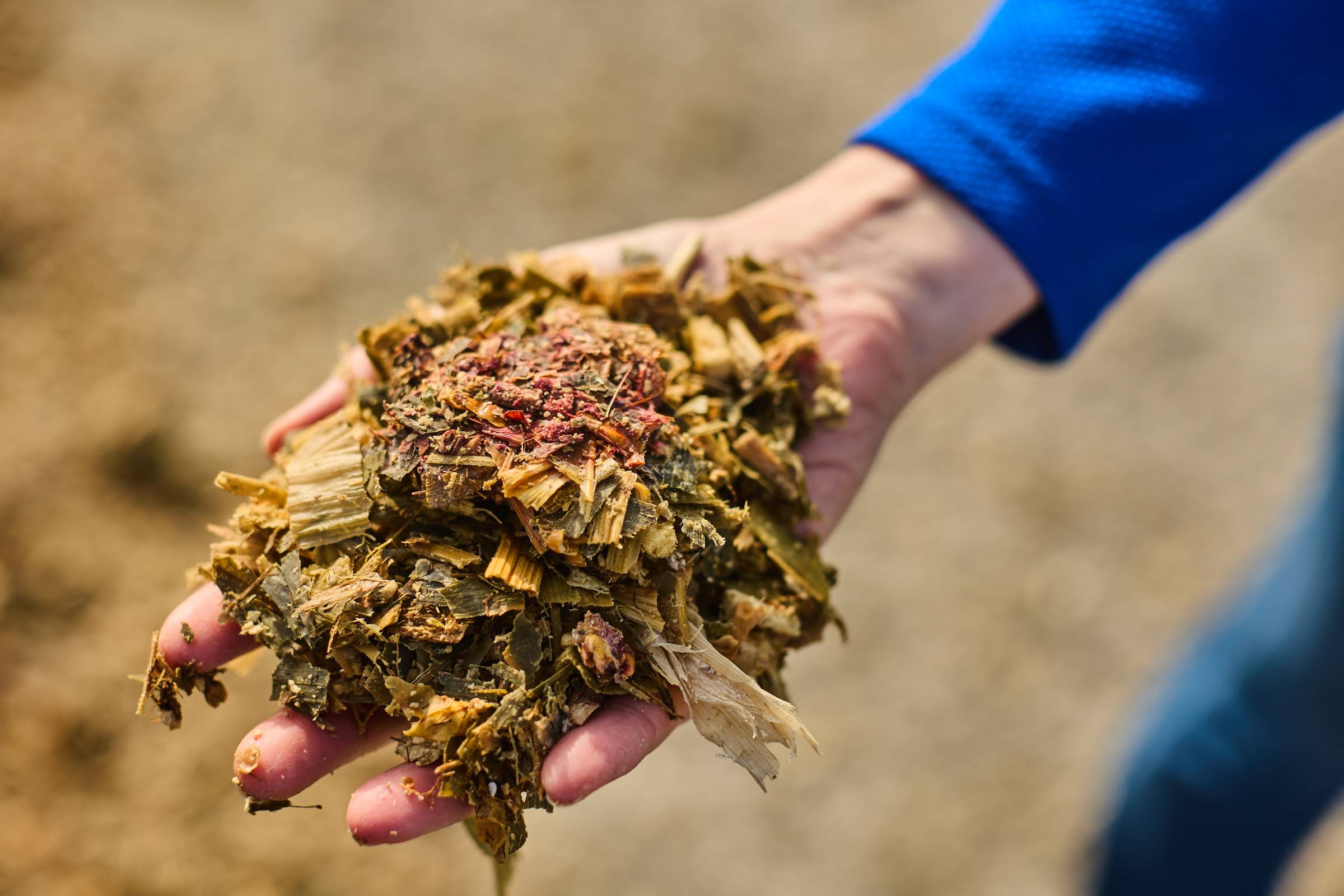The TMR assay results from Dairyland Labs arrive in your inbox, and the mycotoxin levels are across the range. Should you be concerned about the mycotoxin levels and what is the appropriate course of action? What factors besides mycotoxin levels should be considered before determining a mycotoxin mitigation response? The Agrarian Solutions’ philosophy is to evaluate the mycotoxin assay results alongside several other considerations.
Laboratory mycotoxin assay results
The chart below lists low, medium, and high ranges for potential reactions to common mycotoxins. The mycotoxin assay results for a particular feed sample may be influenced by feed variability and accuracy of sampling. The assay reports generated by Dairyland Labs for Agrarian Solutions feature a bar graph depicting that sample’s ranking in low-, mid-, and high-percentiles for that feed type’s historical mycotoxin results. It is important to note that the bar graph is simply a historical ranking and does not indicate the relative risk of feeding the TMR or ingredient as there are important herd indicators that determine the actual mycotoxin reaction.

Animal physiological status and production level
Faster growing and more productive animals are more susceptible to mycotoxin challenges than those at a maintenance stage. In addition, newly weaned calves and newly freshened cows are at a greater risk of a negative mycotoxin reaction than those animals at a stable stage of life. Reproductive success is also at risk to mycotoxin exposure.
Environmental and behavior considerations
Variable weather and temperature extremes challenge animal immune systems and trigger physiological responses that may increase the likelihood of a negative mycotoxin reaction. Further, transportation, overcrowding, and other behavioral situations weaken an animal’s resistance to mycotoxins.
Occurrence of multiple mycotoxins
Multiple mycotoxins at a medium risk level may still indicate a high risk TMR because of the different modes-of-action attacking the animal. A combination of mycotoxins with a myriad of challenges to an animal’s immune system increases susceptibility to other health challenges, as well.
“What the cows are telling us”
The feeding rate of the mycotoxin-mitigation product DTX™ Concentrate can be adjusted based on the above factors or herd indicators. However, the most important feeding rate factor is animal performance and health. An increased incidence of transition health issues, reduced reproductive success, variable manure, or elevated SCC are all key clues that the cows are experiencing mycotoxin-related inflammation and need protection with DTX Concentrate, as evidenced by controlled-research studies and nutritionists’ comments over 25-plus years of field usage.
Agrarian Solutions recommends testing pre-fresh and lactating cow TMRs regularly, with the frequency determined by how quickly the farm is moving through the feedstuffs, ingredient variability, mycotoxin incidence, and herd indicators. Your clients and you can be confident in the peer-reviewed research and 25-plus years of industry experience that DTX Concentrate will enhance natural defenses, protect tight junctions, and support liver health. Contact us for assistance with feed sampling, mycotoxin risk levels, and DTX Concentrate feeding rate adjustments.
Caroline Knoblock, MSc, – Director of Nutrition, Agrarian Solutions and Larry Roth, Ph.D., PAS – Vice President of Nutrition


